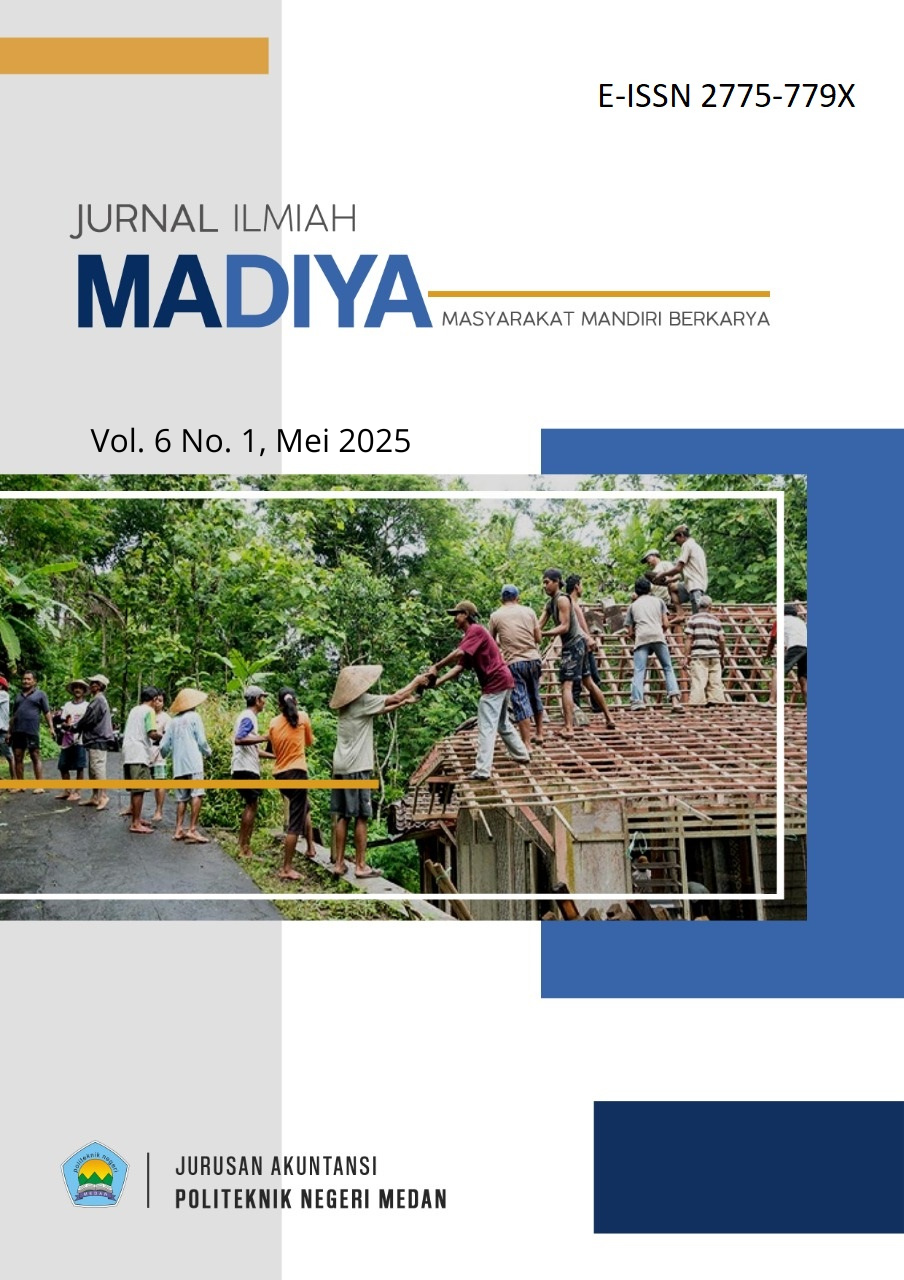PENINGKATAN KUANTITAS DAN KUALITAS KERIPIK MENGGUNAKAN MESIN PENGIRIS SINGKONG-UBI DI DESA JATI KARYA
DOI:
https://doi.org/10.51510/madiya.v6i1.2653Keywords:
Cassava, Chips, Machine, SlicingAbstract
The service partner Mrs. Tuti Lestari is a Micro, Small and Medium Enterprises (MSME) player. The business field that the partner is engaged in is producing cassava chips. Her daily turnover is very small, only 20 kg of cassava or 10 kg of chips. This product is marketed in small stalls around the neighborhood and school canteens. The stalls and canteens retail in small plastic packages to the general public and school students. There is always a demand for more from retailers due to the large demand from the community. It is estimated that more than 60% of the additional demand was not met by the partner. The inability of partners to meet the demand for cassava chips from consumers is due to three reasons: First, partners do not have the extra manpower to handle the production of chips. If additional labor is forced, it will certainly reduce the partner's daily income. Second, to produce chips in large quantities, from the cassava slicing section, problems will arise. The results of slicing cassava are not uniformly thick and thin due to fatigue. Thus, there will be a decrease in the quality of chips (drop quality). Third, the partners do not have a cassava slicer or machine that can produce slices in a short time. The three factors above have caused partners to be unable to increase their chip production. This condition encourages partners to collaborate with the Medan State Polytechnic service team, to jointly solve the three problems that occur. To achieve the desired goals, the proposer uses the following methods as well as the stages of program implementation: Survey to the location to find out the real conditions and situation and then review the existing machine design to be adjusted to the needs of the partners, then the implementation of the manufacture of machine components and their assembly, followed by a machine performance test. If there are no obstacles to the next machine, grants and training are carried out to the partners, then no less important is the publication of activities in mass media and scientific journals. And finally reporting to the funder, in this case P3M. From the method plan that will be carried out, it is expected to produce output in the form of 1 unit of yam slicing machine with a capacity of 60 kg / hour and other outputs, namely publication of activities in scientific journals, mass media and YouTube.
References
Agustiar. 2012. Analisis Produksi Optimum Pada Industri Keripik singkong. Jurnal Ilmu Pertanian. ISSN: 0853-4217. Vol 16. No. 3. Edisi Desember 2012.
Anonim. Biro Pusat Statistik Propinsi Sumatera Utara. Sumut. BPS.go.id/indicator/53/201/1.
BSN (Badan Standardisasi Nasional). 2014. SNI 0838-1:2014. Mesin Pengolah Ubi Kayu. Bagian 1: Mesin Pengiris Ubi Kayu- Syarat Mutu dan Metode Uji. Jakarta: Badan Standardisai Nasional.
Christiani. 2019. Proses Inovasi Keripik Singkong Dari Segi RasaDdan Packaging
http://repository.unika.ac.id/id/eprint/19575
Husman dan Sugeng Ariyono. 2018. Rancang Bangun Mesin Pengiris Singkong. Jurnal Manutech. Vol !0. No. 2. Edisi Desember 2018.
Ichniarsyah, A.N. dkk. 2021. Uji Kinerja Mesin Pengiris Singkong Tipe Vertikal. Jurnal Teknik Pertanian Lampung. P-ISSN: 2302-559X. E-ISSN: 2549-0818. Vol 10. No. 4. Tahun 2021.
Saleh Nasir. 2016. Pedoman Budi Daya Ubi Kayu Di Indonesi. Pusat Perpustakaan dan Penyebaran Teknologi Pertanian. Bogor
Supriyo Imron. 2014. Analisis Nilai Tambah Keripik Ubi Kayu di UKM Barokah Kabupatan Bone Bolango.Vol.1 No.4, (April-Juni 2014), h. 208









